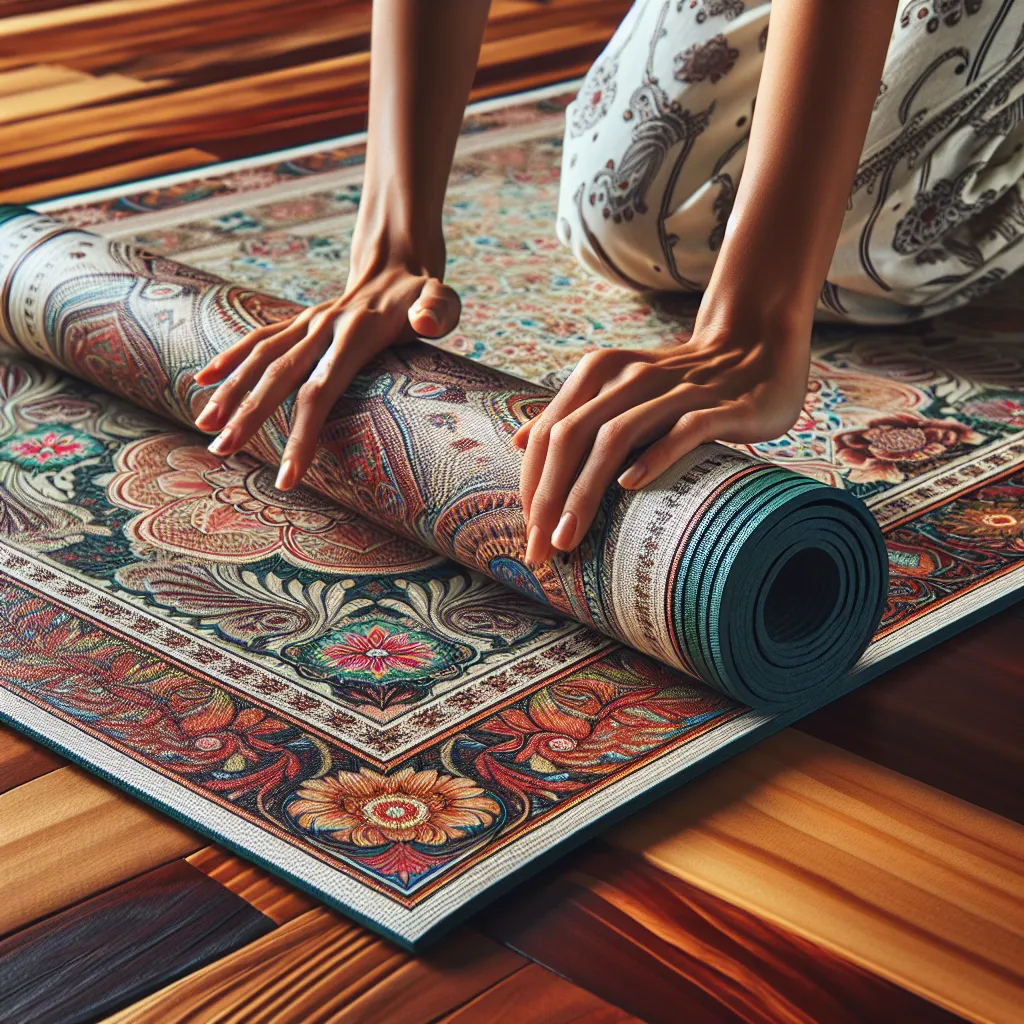
Choosing the Perfect Yoga Mat for Your Practice
The Importance of the Right Yoga Mat for Your Practice
When it comes to practicing yoga, choosing the right yoga mat is crucial for a fulfilling and effective practice. The right yoga mat provides the necessary support, stability, and comfort, allowing you to fully immerse yourself in your practice without any distractions or discomfort.
One of the most important aspects of the right yoga mat is its thickness and density. A thicker mat provides more cushioning for your joints, making it ideal for restorative or therapeutic practices. On the other hand, a thinner mat offers more stability and connection to the ground, which is beneficial for balance-focused practices.
The material of the yoga mat also plays a significant role in its performance. Sticky mats, usually made of PVC, provide a good grip and are suitable for dynamic practices, while natural rubber mats offer great traction and are more environmentally friendly. Other materials like TPE and jute are also gaining popularity for their eco-friendly properties.
Furthermore, the length and texture of the mat are important factors to consider. A longer mat is beneficial for taller individuals as it provides more space to move and stretch comfortably. The texture of the mat’s surface should offer a balance of grip and smoothness to support different yoga styles and preferences.
In conclusion, the importance of choosing the right yoga mat for your practice cannot be overstated. Your yoga mat is your sacred space, where you connect with your body, mind, and spirit. By selecting a mat that aligns with your needs and preferences, you can enhance your yoga experience and elevate your practice to new heights.
Factors to Consider When Choosing a Yoga Mat
When it comes to choosing the perfect yoga mat for your practice, there are several important factors to consider. The first consideration is the thickness of the mat. Thicker mats provide more cushioning and support for sensitive joints, making them ideal for restorative or gentle yoga practices. On the other hand, thinner mats are preferred by those who prioritize portability and a firm connection to the ground, which is essential for balance-based practices such as Ashtanga or Vinyasa flow.
Another crucial factor to take into account is the material of the yoga mat. Most mats are made of PVC, but for those environmentally conscious yogis, there are eco-friendly options available, such as mats made from natural rubber, jute, or organic cotton. These materials not only benefit the planet but also offer excellent grip and durability.
The texture of the mat is also significant. Some practitioners prefer a smooth surface, while others may favor a more textured, sticky mat that prevents slipping during challenging poses. Additionally, consider the size of the mat – standard or extra-long – to accommodate your height and the type of yoga you practice.
Lastly, the price point is a practical aspect to think about. While it’s tempting to opt for the most budget-friendly option, investing in a high-quality mat can significantly enhance your practice and provide long-term durability. By carefully considering these factors, you can select a yoga mat that perfectly suits your individual needs and preferences.
Different Types of Yoga Mats and Their Benefits
When it comes to choosing the perfect yoga mat for your practice, it’s essential to consider the different types of yoga mats available and their specific benefits. The most common types of yoga mats include PVC mats, TPE mats, rubber mats, and cork mats.
PVC mats are widely available and offer excellent grip and cushioning, making them suitable for practitioners who prioritize stability during their practice. On the other hand, TPE mats are known for being eco-friendly and biodegradable, making them a great choice for environmentally conscious yogis.
Rubber mats are ideal for hot yoga practices as they offer superior grip, even when the mat is wet from perspiration. Additionally, their durability makes them a long-lasting investment for regular practitioners. For those seeking a more sustainable option, cork mats provide natural antimicrobial properties, exceptional grip, and a firm surface for stability.
Considering the specific style of yoga you practice is also crucial when choosing the right mat. For example, practitioners of hot yoga may benefit from a mat with moisture-wicking properties, while those who practice gentle or restorative yoga may prefer extra-cushioned mats for added comfort.
Ultimately, selecting the perfect yoga mat involves finding a balance between your personal preferences, the style of yoga you practice, and the specific benefits offered by different types of mats.
By understanding the distinct features and benefits of each type of yoga mat, you can make an informed decision that enhances your overall yoga experience and supports your individual needs.
Tips for Maintaining Your Yoga Mat for Longevity
When it comes to choosing the perfect yoga mat for your practice, it’s essential to consider not only the quality of the mat but also the maintenance required to ensure its longevity. After investing in a high-quality yoga mat, it’s important to implement a regular cleaning routine to keep it in top condition. Here are some essential tips for maintaining your yoga mat.
First and foremost, always check the manufacturer’s guidelines for cleaning and maintenance. Different materials may require different cleaning methods, and using the wrong products can damage the mat. In general, most yoga mats can be cleaned with a mixture of gentle soap and water. After cleaning, make sure to thoroughly rinse the mat to remove any soap residue.
Additionally, consider using a yoga mat spray or natural disinfectant to keep your mat fresh and free from bacteria. Regularly airing out your mat after practice can also help prevent odors and prolong its lifespan. Some practitioners even choose to hand wash their mats to ensure a deep clean, but always be sure to let it dry completely before rolling it up.
When storing your yoga mat, avoid keeping it in direct sunlight or extreme temperatures, as this can cause the material to degrade. Instead, find a cool, dry place to store your mat unrolled or loosely rolled to maintain its shape.
By following these tips for maintaining your yoga mat, you can ensure that it remains in top condition for years to come, providing you with a supportive and hygienic surface for your practice.



